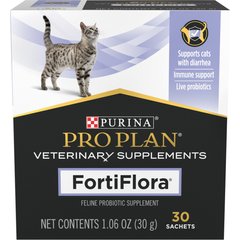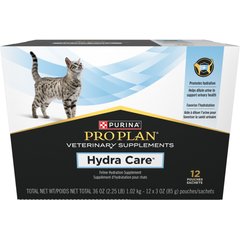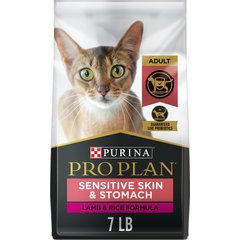Why Fat is Good for Your Cat
Cat Food Fats Aren't Evil
By Lorie Huston, DVM
We often think of fat as an evil thing when it is added to our diet, so it comes as no surprise that many of us are also wary of it in our cat's food. However, some amount of fat is necessary, even vital, to the health of your cat. Let's take a look at just how and why fat is important in cat food.
What are Fats?
There are many types of fats present in cat food and each type of fat plays a different role in the diet. Fats used in cat foods are typically highly digestible and are used by the body as energy source.
All fats are made of fatty acids. These fatty acids can be thought of as the building blocks of the different types of fats. Fatty acids may be characterized in several different ways. They may be classified, based on the length of the carbon-chain that makes up their backbone, as long-chain, medium-chain, or short chain. They may also be classified as saturated, unsaturated, or polyunsaturated based on the number of bonds between the carbon atoms in the backbone. In addition, they may be classified based on where the bonds between the carbon atoms occur. Omega-3 and omega-6 fatty acids are examples of this type of classification.
Why Fat is Good for Your Cat
 Feliway Optimum Enhanced Calming 30 Day Diffuser for CatsRated 3.9 out of 5 stars1591Reviews$29.99Chewy Price
Feliway Optimum Enhanced Calming 30 Day Diffuser for CatsRated 3.9 out of 5 stars1591Reviews$29.99Chewy Price Purina Pro Plan Veterinary Diets FortiFlora Powder Probiotic Digestive Supplement for Cats, 30 countRated 4.7 out of 5 stars5631Reviews$30.99Chewy Price
Purina Pro Plan Veterinary Diets FortiFlora Powder Probiotic Digestive Supplement for Cats, 30 countRated 4.7 out of 5 stars5631Reviews$30.99Chewy Price Purina Pro Plan Veterinary Diets Hydra Care Liver Flavored Liquid Supplement for Cats, 3-oz pouch, case of 12Rated 4.4 out of 5 stars2629Reviews$14.99Chewy Price
Purina Pro Plan Veterinary Diets Hydra Care Liver Flavored Liquid Supplement for Cats, 3-oz pouch, case of 12Rated 4.4 out of 5 stars2629Reviews$14.99Chewy Price Purina Pro Plan Adult Sensitive Skin & Stomach Lamb & Rice Formula Dry Cat Food, 7-lb bagRated 4.6 out of 5 stars2245Reviews$28.08Chewy Price
Purina Pro Plan Adult Sensitive Skin & Stomach Lamb & Rice Formula Dry Cat Food, 7-lb bagRated 4.6 out of 5 stars2245Reviews$28.08Chewy Price
What Do Fats Do?
Fat is important to the health and well-being of a cat in a variety of ways. Here are just some of them:
- Fat is a concentrated energy source for cats. In fact, fat provides twice the amount of energy of protein and carbohydrates.
- Fat makes up part of your cat's cell membranes and helps transport nutrients and other substances across cell membranes.
- Fat plays a role in the speed of nerve signal transmissions
- Fat produces metabolites, which help control inflammation.
- Fat contributes to the formation of some hormones, including estrogen, testosterone, and progesterone.
- Fat provides a barrier against bacterial and viral invasions.
- Fat makes cat food more palatable and affects satiety, the feeling of being full after eating.
- Fat enhances the absorption of fat-soluble vitamins A, D, E, and K.
What are Common Sources of Fat in Cat Food?
Animal fat and vegetable oil are often used as sources of fat in the diet of dogs and cats. Linoleic acid is found in the fat of poultry, beef and pork but the best sources are corn, soybean, and safflower oil. Arachidonic acid is found in animal fat and fish oil. Omega-3 fatty acids are found in fish oil, krill oil, and flaxseed.
How Much is Too Much Fat?
The best pet cat foods will have an appropriate and balanced amount of fat in the diet. However, bear in mind that your cat may have a unique set of feeding requirements. For example, cats with conditions like pancreatitis may need cat food that is lower in fat. Consult your veterinarian to discuss what cat food is most appropriate for your pet.